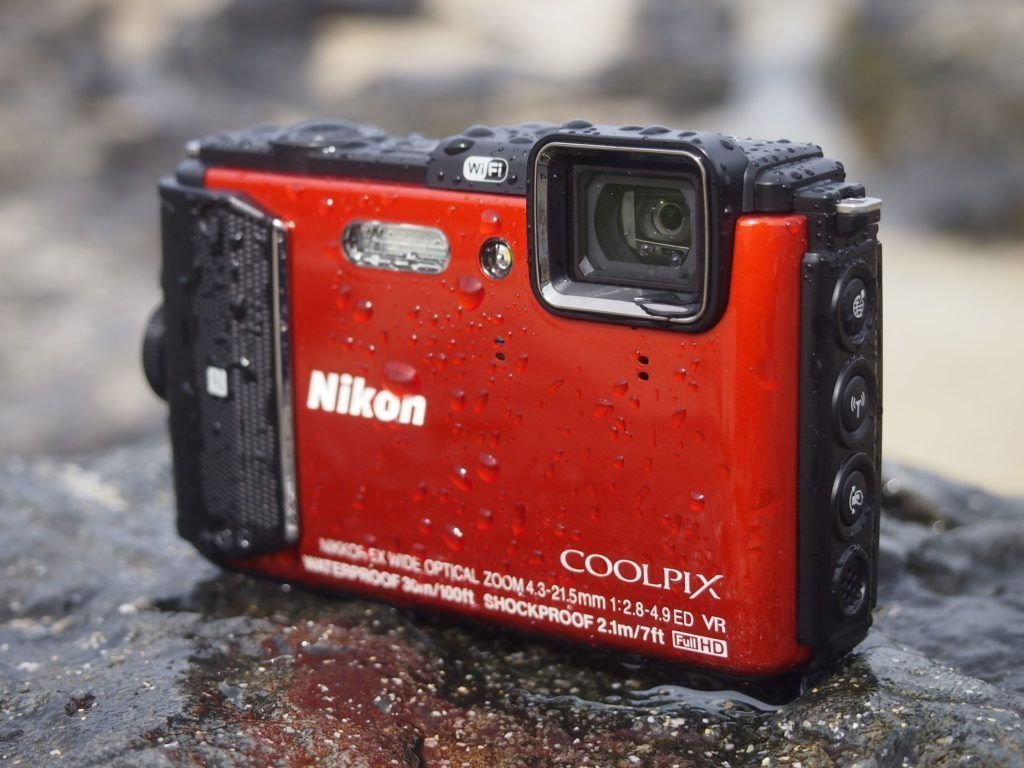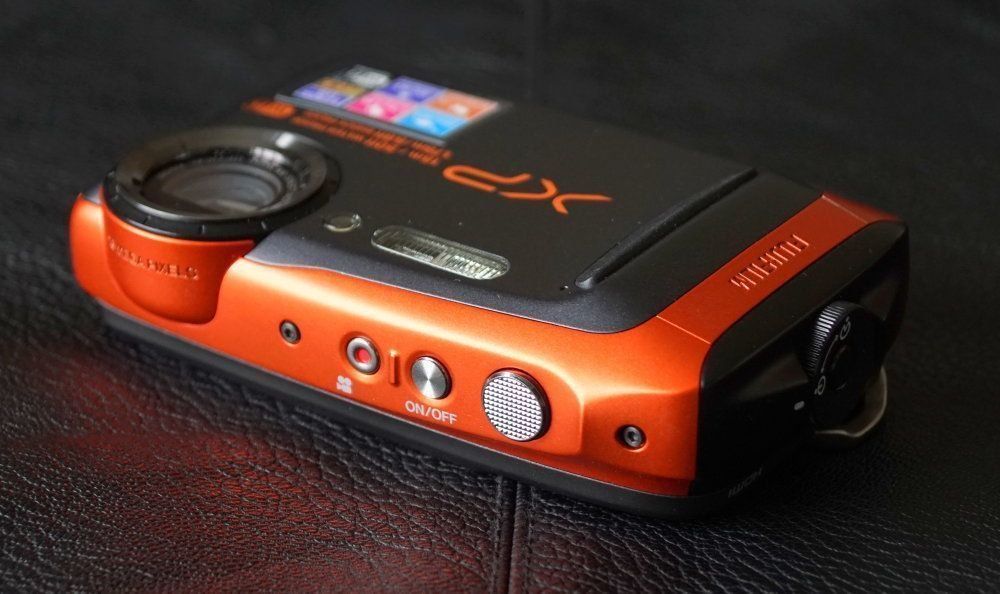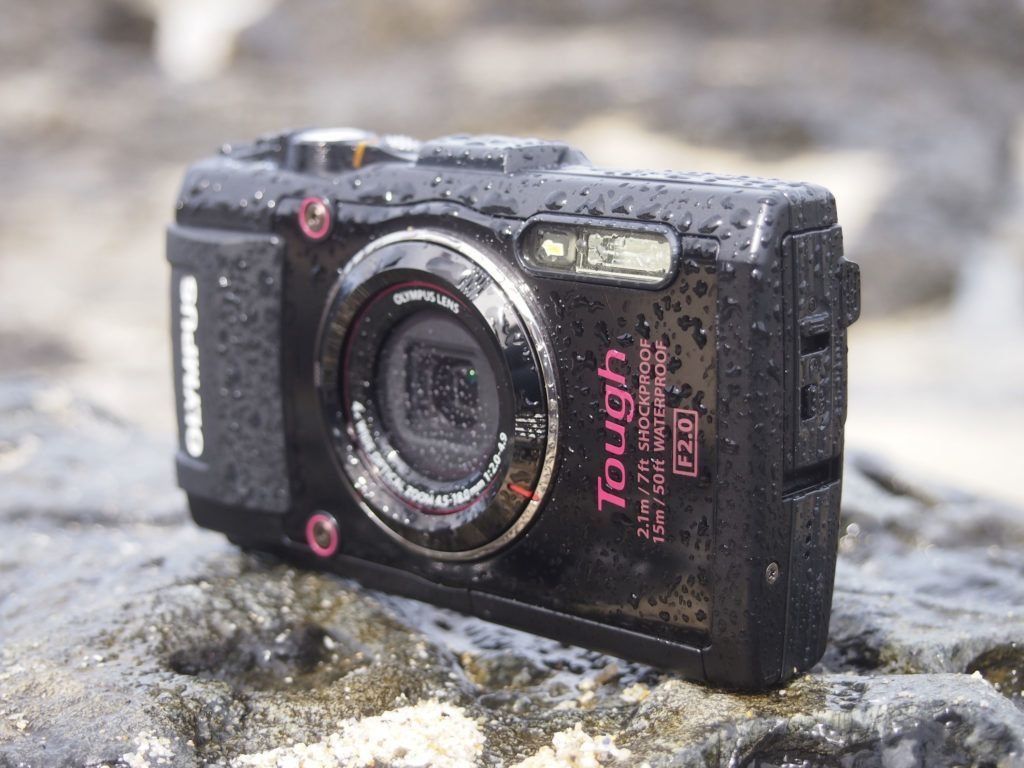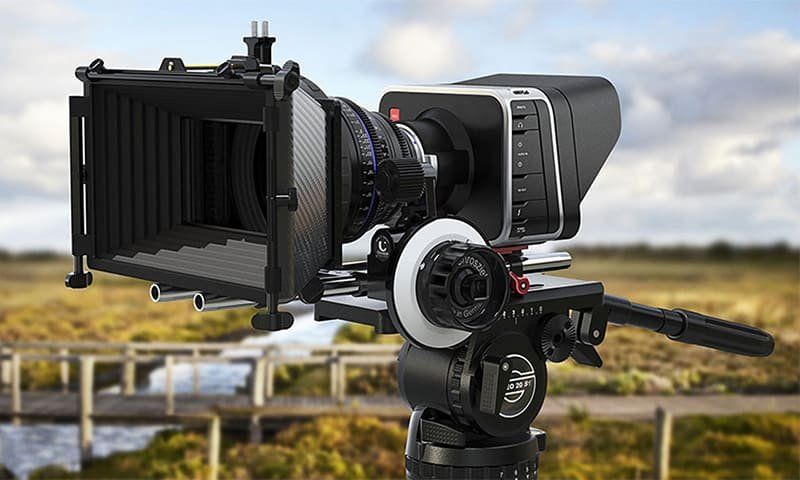The best underwater cameras in 2022
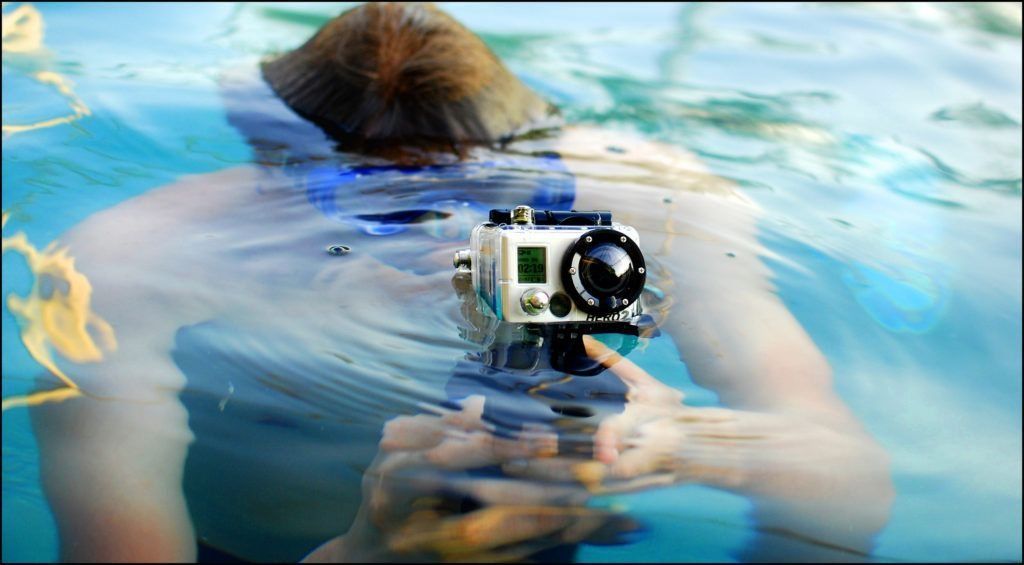
The beauty of nature untouched by man fascinates, it is amazing and beautiful. In order to keep a piece of this magic in memory, engineers have developed cameras that work underwater and allow you to take beautiful pictures, diving to the depths, during snowfall, rain or heavy fog.
Modern rugged photography devices allow people who are fond of photography to take pictures in the mountains, during precipitation, under the surface of the water and on the water. The line of cameras for photographing underwater is divided into several groups of devices that differ in price and capabilities. For underwater photography, it is not necessary to buy expensive highly professional equipment; an electronic device from the group, which is intended for people who love outdoor activities, is suitable for this. This article will describe the characteristics of underwater vehicles that determine the quality of underwater photography, and some aspects of building the process of underwater photography itself.
Content [Hide]
- 1 Subtle moments when organizing underwater shooting and important characteristics of special cameras
- 2 The most popular camera models and their parameters
- 2.1 Sealed camera company Panasonic Lumix DMC-FT5
- 2.2 Underwater camera Olympus STYLUS TG-870
- 2.3 Camera Nikon Coolpix AW130
- 2.4 Camera Fujifilm FinePix XP90
- 2.5 Camera Olympus Tough TG-4
- 2.6 Camera Canon PowerShot D30
- 2.7 Camera Sony Cyber-shot DSC-TX30
- 2.8 Camera Nikon Coolpix S33
- 2.9 Ricoh WG-5 GPS Camera
- 2.10 Camera Panasonic Lumix DMC-FT30
- 3 conclusions
Subtle moments when organizing underwater shooting and important characteristics of special cameras
Taking photographs under adverse weather conditions and underwater is different from taking photographs in normal weather on land. The main distinguishing feature is the presence of a liquid medium around the photographer with its own characteristics. The conditions for the propagation of light in a gaseous medium differ from the conditions for the movement of a light wave in a liquid.
Propagation of light in water
It is known from the school physics class that water perfectly absorbs light waves. A feature of this process is that the degree of absorption of various light frequencies, the sum of which is visible light, is different. For example, already when diving to one meter, red color will fall out of visible light, and if you go down to a depth of more than 6 m, then all surrounding objects will be visible in green and blue colors.With the standard settings of the device, the pictures will be in blue colors. When diving to a depth of 30 meters or more, photos are obtained in black and white. You should also take into account such a property of water as color refraction.
Pressure under water
When diving under water, the pressure on a person and equipment increases by about 0.1 MPa for every 10 m, so this factor must be taken into account when choosing equipment for shooting underwater.
Refraction of light in water
Light is refracted as the interface passes, so objects seen in the liquid appear slightly larger. When photographing underwater, it is necessary to take this circumstance into account and choose the right distance to the object being photographed.
The presence of various particles in the water column can scatter the light from the flash and ruin the photo. If you take a picture from the bottom up, then the likelihood of getting good image quality in the photo increases significantly.
Based on the above properties of water, it is necessary to choose a camera that meets all user requirements.
Each device for underwater photography is designed for a certain, maximum allowable depth of immersion. The case is responsible for this characteristic of the device. The greater the depth at which the survey will be carried out, the stronger the body of the device should be. There is also additional protective equipment that allows you to dive the camera to greater depths than it was designed for.
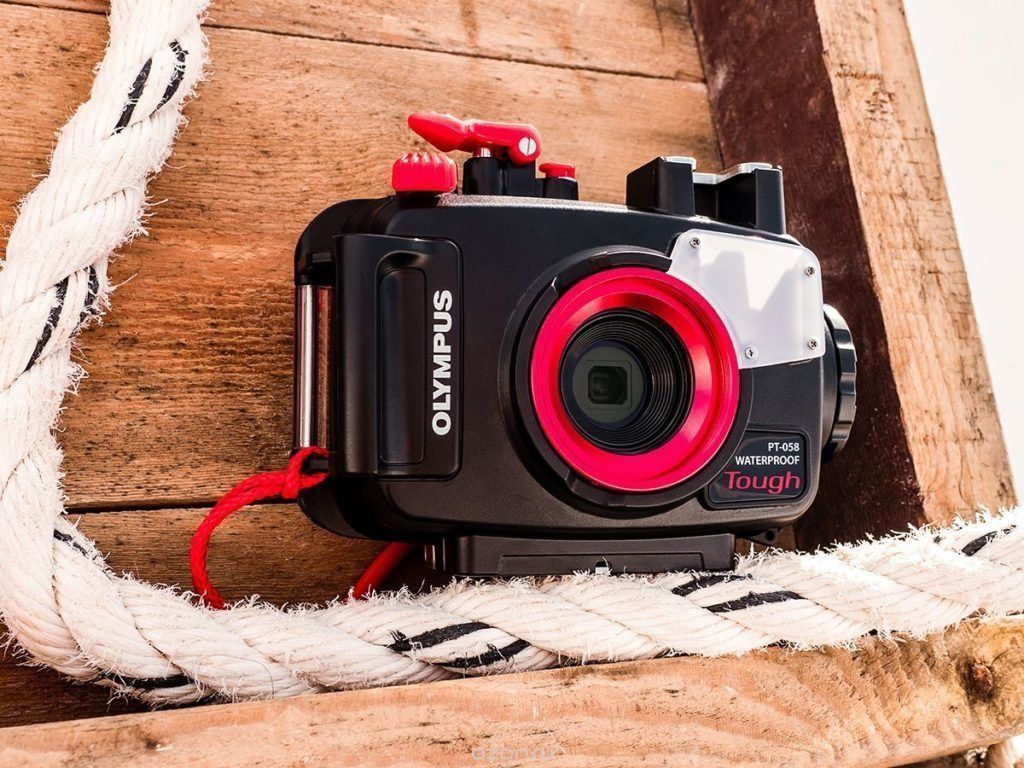
Autonomy indicator
The number of shots taken, the ability to connect one or two flashes determines the capacity of the battery.The greater its ability to accumulate an electric charge (capacity), the more shots the battery will last. The best option is to have another spare battery for insurance.
A very important characteristic of the camera is the range of change of the focal length of the camera lens. For great shots, it's best to choose a lens with a wide angle of view and zoom between 24mm and 29mm.
A person who chooses a camera for underwater shooting should pay attention to the operating temperature range at which the device will fully operate, to the impact and vibration resistance of the product.
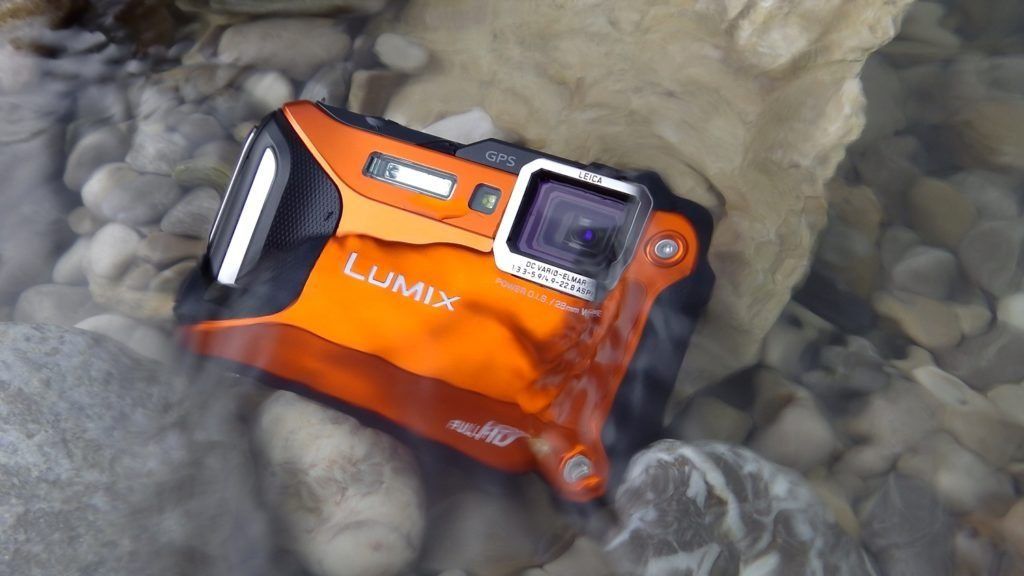
The most popular camera models and their parameters
Description of models of cameras that are loved by many people who love to capture their outdoor activities in the photo.
Sealed camera company Panasonic Lumix DMC-FT5
votes 2
| Name of indicator | Indicator value |
|---|---|
| Machine Monitor | LCD technology, 7.62 cm display with 0.46 Mpel resolution |
| Device Lens | Leica DC Vario-Elmar family |
| Optical lens with a photodiode light-sensitive matrix manufactured using the technology | Complementary metal oxide semiconductor (CMOS), 1/2.3 |
| ISO sensitivity range | 100 to 3200 ISO, Auto mode. High ISO range 1600 to 6400 |
| Digital Video Recording Format | Image resolution 1920×1080 pel |
| Approximation optical | 4.6 times |
| Number of operating points | 16.1 Mpel |
| digital zoom | 4 times |
| WiFi network | present |
| GPS navigation sensor | present |
| NFC | present |
| dimensions | 109.2/28.9/67.4mm |
| Additional options | Atmospheric pressure measurement module, altimeter, depth measurement sensor |
| Weight | 188 g (rechargeable battery and removable memory card removed) |
| Price | from 290$ |
This rugged camera is designed for people who enjoy dynamic outdoor recreation. Serious shock resistance and the feasibility of shooting at depths up to 10 m make this device a worthy companion for the traveler.
An excellent lens of the Leica DC Vario-Elmar family, with an excellent 4.6x optical zoom, a touch display and a high-performance processor that perfectly processes digital images of the Venus Engine, allows you to get wonderful wildlife shots. The received photo and video files can be easily placed on any resources on the Internet, if there is synchronization with a smartphone connected to the global network.
- allows you to take pictures of wildlife at a depth of 10 m;
- has a shock-resistant case;
- does not lose its strength upon impact after a fall from a height of up to 2 m;
- the device will operate at ambient temperatures down to minus 10 °C;
- there are options such as NFC, Wi-Fi and GPS, which greatly facilitate the life of any travel lover;
- the presence of additional modules that allow you to measure atmospheric pressure, height and depth of immersion, recording all this data in a photo file.
- not detected.
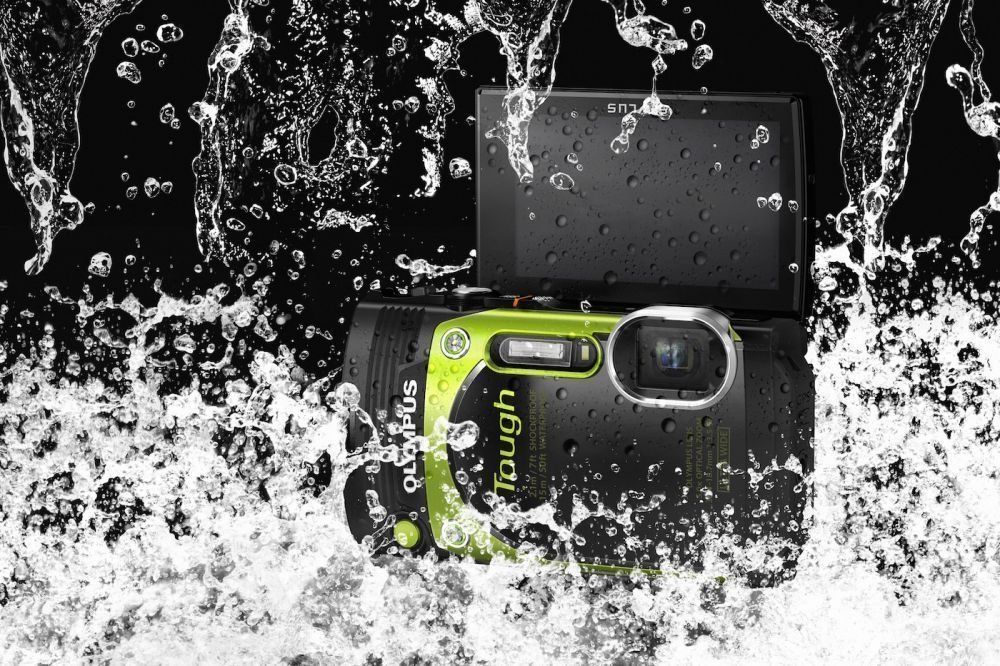
Underwater camera Olympus STYLUS TG-870
votes 6
| Characteristic name | Characteristic value |
|---|---|
| Photodiode photosensitive matrix, manufactured by technology | CMOS, 1/2.3 |
| Number of effective points | 16 Mpel |
| Digital video recording format | Image resolution 1920×1080 pixels |
| Machine screen | LCD, 3-inch, 180° rotatable monitor with 0.92 Mpel resolution |
| ISO sensitivity range | Auto Mode and High Sensitivity Auto Mode |
| ISO sensitivity range for manual adjustment | Discrete values ISO 125, 200, 400, 800, 1600, 3200, 6400 |
| GPS navigation sensor | present |
| Image magnification optical | Widescreen 5 times |
| Wi-Fi network environment | present |
| Image magnification digital | 4 times, in combined mode with optics up to 20 times |
| Super resolution zoom | 2 times, in combined mode with optics up to 10 times |
| dimensions | 112.9/27.6/64.1mm |
| Weight | 224 g (with battery and external memory card) |
| Price | from 300$ |
The waterproof camera manufactured by Olympus, along with excellent quality and serious functionality, has one highlight in the design - a swivel monitor that provides the ability to take selfies. A fearless blogger can take wonderful photos in any climate, for example, capturing himself on a snow-covered peak or while spearfishing.
- reliable and durable device that will work perfectly even after a fall from a height of 2.1 m and at an ambient temperature of minus 10 ° C;
- the camera allows you to shoot marine life at a depth of up to 15 m;
- you can take panoramic photos using a wide-angle lens;
- The unit allows you to record slow motion video and make interval video recording.
- video is recorded in a rectangular format with an aspect ratio of 16/9.
Camera Nikon Coolpix AW130
votes 2
| Name of indicator | Indicator value |
|---|---|
| Lens with a photodiode matrix, manufactured by technology | Complementary Metal Oxide Semiconductor (CMOS), 1/2.3 |
| Working point value | 16 Mpel |
| NFC | present |
| Digital video recording format | With image resolution 1920×1080 pel |
| Sensitivity Change Values | ISO 125 to 1600. 3200, 6400 ISO units (option available when using "Auto mode") |
| Machine Monitor | OLED, 2.8 inches with a resolution of 0.921 Mpel and with a coating that protects against glare in the sun. |
| Approximation optical | Widescreen 5 times |
| dimensions | 110.4/26.8/66mm |
| digital zoom | 4 times |
| WiFi network module | In stock |
| GPS Position Sensor | There is |
| Additional options | Altimeter, depth gauge, electronic compass, barometer, altimeter |
| Weight | 221 g (with replaceable modules) |
| Device cost | from 270$ |
The well-known Nikon company has developed and brought to the market an excellent waterproof device for underwater shooting (depth of 30 m). Although this is a record achievement, present only in Nikon models, only a professional diver will need it. The reliability and durability of the camera is confirmed by tests in which it was thrown from a height of 2 m, pictures were taken at a frost of -10 ° C.
The device is equipped with a bright monitor that provides rich color reproduction and is covered with high-quality anti-reflective protection.
The function of the reverse, additional illumination built into the matrix provides the possibility of obtaining high-quality images in low light of the subject being photographed.The small lens provides a 5x optical zoom that, when digitally processed, produces 10x magnification images with little loss in image quality.
The totality of the characteristics of this camera allows us to assert that this is the best model on the market for such devices today. In fairness, it should be noted that when photographing under normal conditions, the quality of the images will be the same as when shooting with a good smartphone, so this device will be of interest only to lovers of extreme conditions and divers.
- works great at a depth of up to 30 m;
- an electronic map and GPS, GLONASS and QZSS location sensors will allow you to accurately determine your coordinates during the survey and mark them on the map;
- the reliability and durability of the camera.
- not detected.
Camera Fujifilm FinePix XP90
votes 0
| Parameter name | Parameter value |
|---|---|
| Photosensitive matrix produced by technology | CMOS, 1/2.3 |
| Video recording | 1920×1080 pel image recording |
| Working points | 16 Mpel |
| Range of change of sensitivity to light flux | ISO 100 to 3200, ISO 6400 maximum |
| WiFi network | present |
| Approximation optical | 5 times |
| Additional options | missing |
| digital zoom | 2 times |
| Device Monitor | LCD, 7.62 cm display with a resolution of 0.92 Mpel |
| GPS navigation sensor | missing |
| NFC | missing |
| dimensions | 110.2/29/71mm |
| Weight | 203 g (with battery and external memory card) |
| Price | from 185$ |
Fujifilm employees, not retreating in the competition, have created a device with an unusual design, a comfortable grip that allows you to take pictures with one hand and excellent technical performance. The manufacturer claims that the device works perfectly at a frost of 10 ° C and under water at a depth of up to 15 m. Although it is better not to dive deeper than 12 m, because there are isolated reviews that the device could not shoot deeper than 12 meters. It is possible that this was a manufacturing defect.
Using the "underwater (macro)" and "underwater shooting" options, the photographer will automatically optimize depth capture and capture beautiful shots of the most interesting moments.
The smartphone remote control option allows you to control the device from a distance. When you press the Burst Mode key, you can capture a fast-moving object in high quality, with the “continuous shooting” option turned on, the camera shoots images at a speed of 10 shots per second.
The combination of all the advantages of this camera allows you to safely recommend it for purchase to people who like this model. True, if they are not interested in the coordinates of their location, because the device does not have a GPS sensor.
- works perfectly at a frost of 10 ° C and under water at a depth of up to 15 m;
- the monitor clearly and juicy displays images;
- light weight;
- convenience of holding the device in the hand;
- high-quality protection against sand and dust will make the operation of this device easy and enjoyable.
- no GPS sensor.
Camera Olympus Tough TG-4
votes 1
| Characteristic name | Characteristic value |
|---|---|
| Photodiode array produced by technology | Complementary metal oxide semiconductor, 1/2.3 |
| Number of operating points | 16 Mpel |
| Video format | The device records a video series with a resolution of 1920 × 1080 pel |
| Values for changing the sensitivity of the matrix to light | ISO 100 to 3200, ISO 6400 maximum |
| Optical magnification of the picture | 4 times |
| Approximation, using digital processing | 4 times |
| Gadget Display | LCD, 3-inch display with a resolution of 0.46 Mpel |
| Wireless Wi-Fi | In stock |
| GPS Geographic Positioning Sensor | There is |
| Additional modules | Pressure gauge, cotton control, electronic compass, |
| Dimensional parameters | 112/31/66 mm |
| Weight | 248 g (with battery and external memory card) |
| Price | 310$ |
An underwater camera with a rugged, waterproof housing designed and marketed by Olympus.
According to experts, the design of the device has one serious drawback. The lens is located on the body in such a way that when photographing the fingers of the person taking the picture can easily get on the photographed image and spoil the beautiful frame. Therefore, before taking a picture, it is necessary to pay attention to how a person holds the camera, and whether his fingers are in the frame.
The camera has a very convenient settings management system. By turning the control wheel forward or backward, you can choose the best settings for capturing an image. The presence of a GPS navigation module in the device allows you to accurately determine the coordinates and record them on the image, and using a wireless Wi-Fi connection to transfer it to a smartphone or cloud on the Internet.The camera battery is recharged via a USB connector developed by the company's engineers, which is not very convenient, the user will have to have a non-standard micro USB suitable for many devices, as well as this unique cable. The revealed shortcomings of the camera do not in any way infringe on its excellent characteristics and capabilities.
- convenient control system settings.
- non-standard micro USB, which is not very convenient;
- inconvenient lens position.
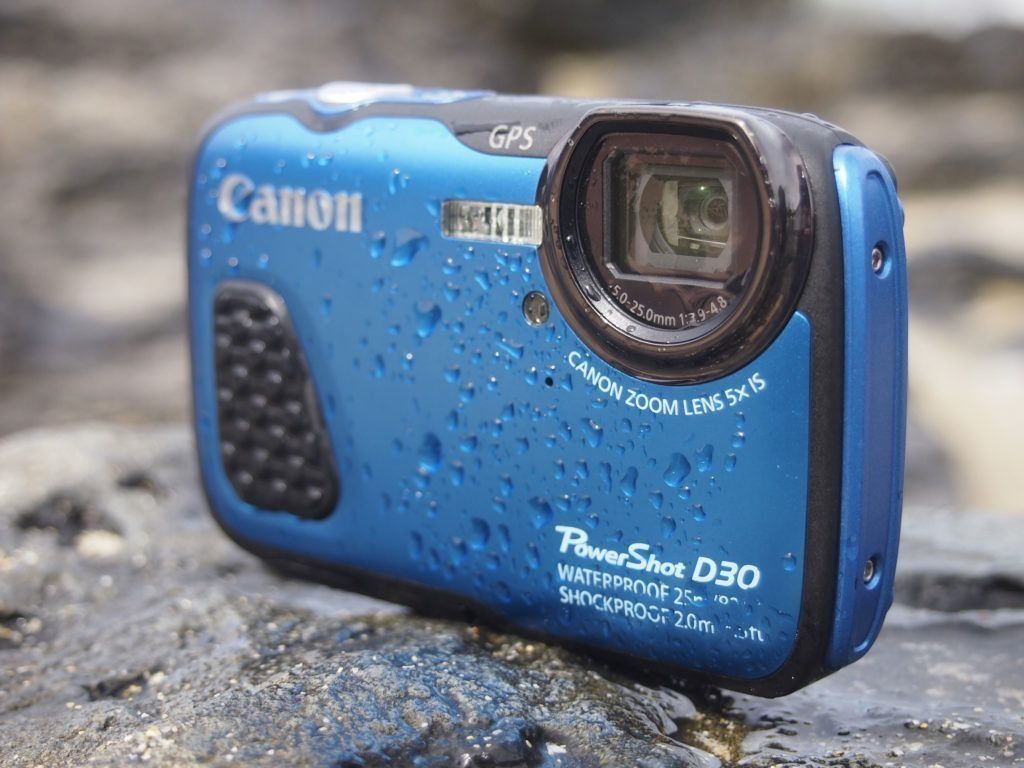
Camera Canon PowerShot D30
votes 0
| Parameter name | Parameter value |
|---|---|
| Photodiode Array Lens Produced by Technology | CMOS, 1/2.3 |
| Working point value | 12.1 Mpel |
| Digital video recording format | The image is written with a resolution of 1920 × 1080 pixels |
| The amount of change in the sensitivity of the matrix to light | 100 to 3200 ISO, Auto ISO |
| Approximation using optics | 5 times |
| digital zoom | 4 times |
| Machine display | LCD, 3-inch display with a resolution of 0.461 Mpel |
| WiFi network | No |
| GPS navigation sensor | No |
| NFC | No |
| dimensions | 109/28/68mm |
| Weight | 218 g (with battery and replaceable memory card) |
| Price | from 250$ |
An underwater camera from Canon, which is in constant competition with Nikon, has the ability to capture beautiful deep-sea footage and will be a godsend for the experienced diver. The maximum shooting depth, of course, is not a champion, but very serious - up to 25 m. The upper part of the body is made of durable and lightweight aluminum alloy, so that the grip with the fingers is good, it is covered with rubber.The remaining elements of the body are made of powerful and durable plastic, which even looks very strong and serious. The controls are placed perfectly on the case.
Canon's traditional menu controls are simple and intuitive. Even if a person has never worked with such equipment, he can easily figure it out in 10 minutes. The disadvantage is the lack of additional options in the form of a depth gauge, barometer and Wi-Fi module. The presence of a GPS navigation module in the design allows you to set the coordinates for the image.
Poor lighting can spoil the picture, but with sufficient light output, the quality of the pictures is perfect, they are clear even in the corners.
- shooting depth up to 25 m;
- the camera lens is equipped with a 5x zoom;
- the pleasant design of the device does not impress over the protected unit.
- not detected.
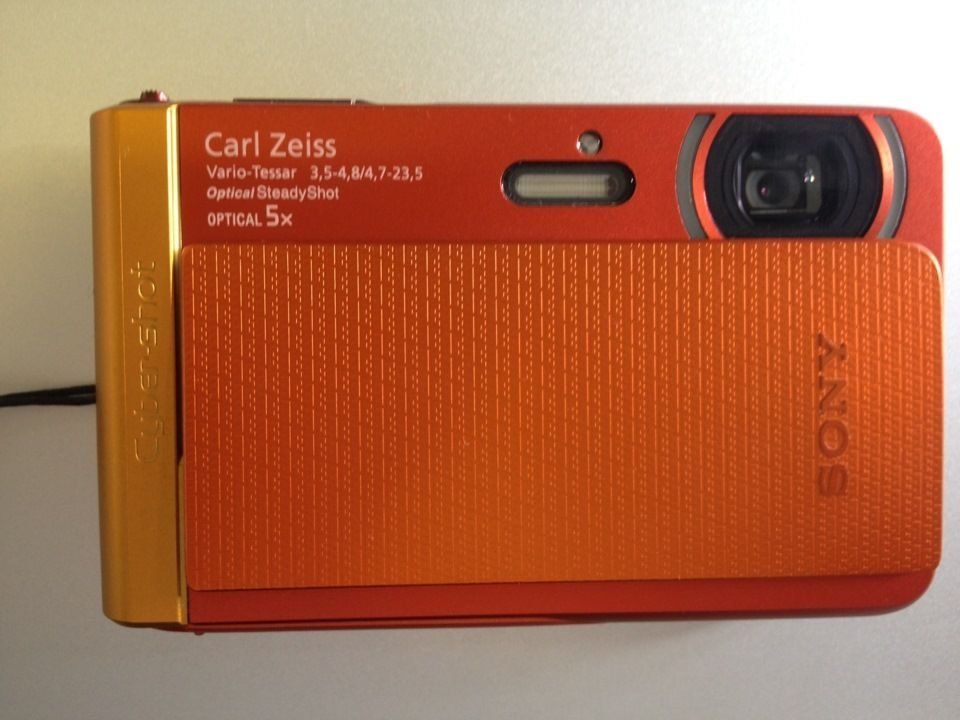
Camera Sony Cyber-shot DSC-TX30
| Name of indicator | Indicator value |
|---|---|
| Optical lens with a photodiode light-sensitive matrix manufactured using the technology | Complementary Metal Oxide Semiconductor (CMOS), 1/2.3 |
| Number of operating points | 18.2 Mpel |
| Digital Video Recording Format | Image resolution 1920×1080 pel |
| Matrix light sensitivity range | 80 to 3200 ISO, Auto ISO, ISO6400, ISO12800 |
| Approximation using optics | 5 times |
| digital zoom | 4 times |
| Machine screen | LCD, 3-inch display with a resolution of 1.2288 Mpel |
| WiFi network | Module not installed |
| GPS navigation sensor | Module not installed |
| dimensions | 96/15/59 mm |
| Weight | 140 g (with battery and external memory card) |
| Price | from 260$ |
This model is distinguished by the presence of the famous Carl Zeiss optical system and interesting design. The camera is armed with a matrix with a resolution of 18.2 megapixels, and this is by far the best indicator among devices for underwater photography. And gives its owner the opportunity to take pictures with excellent detail. The thin (15 mm) body of the device is made in various colors, and allows fans of underwater filming to choose a device to their liking.
The excellent electronic image focusing system keeps the subject always in focus and allows you to get very clear pictures. The device can record video at 30 frames per second. The large screen delivers a very clear image that is free of glare from the sun.
- matrix with a resolution of 18.2 MP;
- high-quality electronic focusing system.
- small size and weight of only 140 grams did not allow developers to place GPS and Wi-Fi modules inside it.
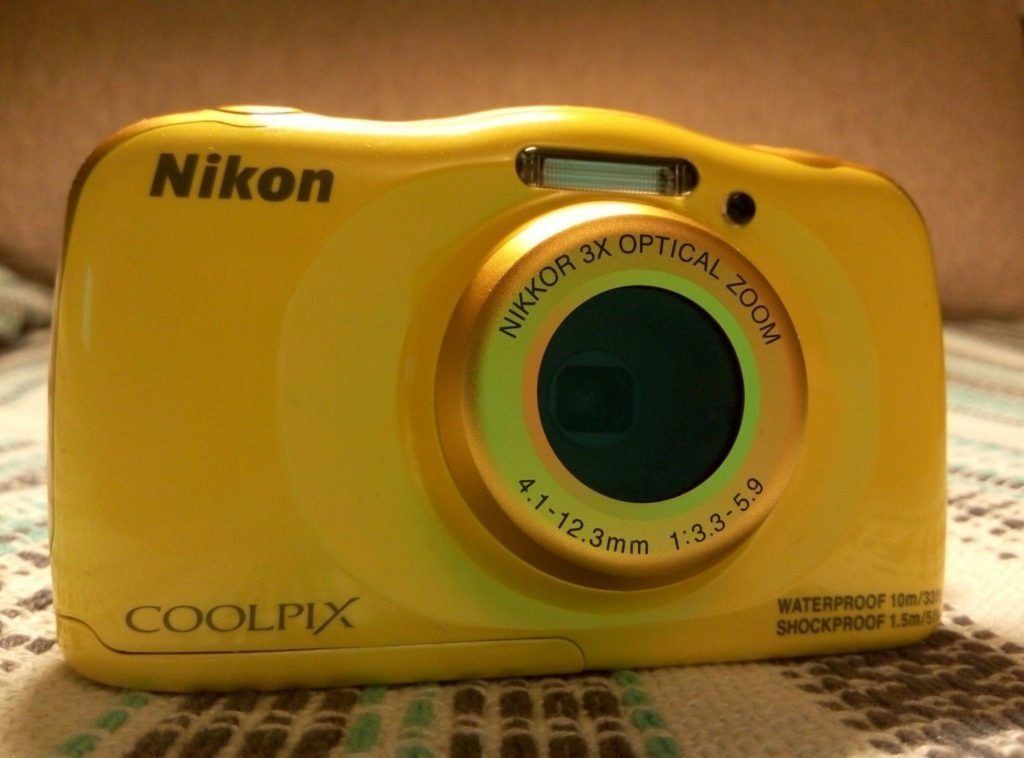
Camera Nikon Coolpix S33
votes 0
| Name of indicator | Indicator value |
|---|---|
| Optical lens with a photodiode light-sensitive matrix manufactured using the technology | Complementary Metal Oxide Semiconductor (CMOS), 1/2.3 |
| Number of operating points | 13.2 Mpel |
| Digital Video Recording Format | Image resolution 1920×1080 pel |
| The range of change in the sensitivity of the matrix to light | 100 to 1600 ISO, Auto ISO |
| Approximation modified by optics | 3 times |
| digital zoom | 4 times |
| Machine display | LCD, 2.7 inch display with 0.23 Mpel resolution |
| Wireless Wi-Fi | Not included in the design |
| GPS navigation sensor | Not included in the design |
| dimensions | 110/38/67mm |
| Weight | 180 g (with battery and replaceable memory card) |
| Price | from 115$ |
Parents of young naturalists will love Nikon's inexpensive rugged camera model, which will allow them to get the hang of this technique. People who decide to try themselves as an explorer of life under water, but who have large free funds, will also like this budget option.
The device has good features. A 13.2MP digital sensor and a 3x optical zoom lens let you take good photos. Ease of management will not confuse even the average user. Various auto focus modes allow you to take great pictures even at depth 10.
- inexpensive model;
- Ease of controls;
- various auto focus modes.
- not detected.
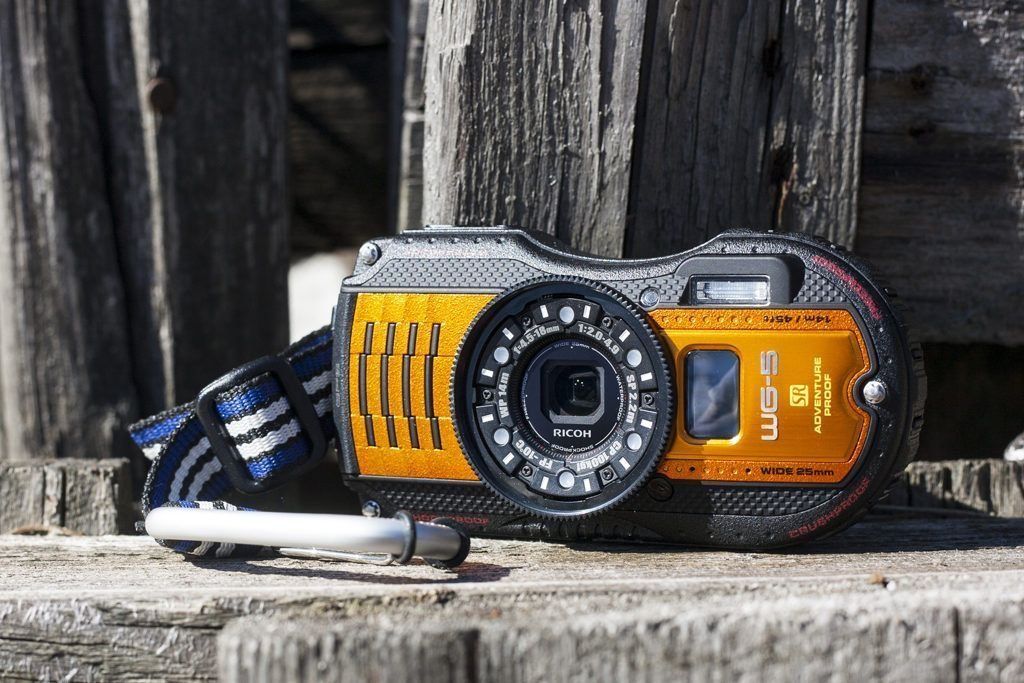
Ricoh WG-5 GPS Camera
votes 0
| Name | Designation |
|---|---|
| Optical lens with a photodiode array, made by technology | CMOS, 1/2.3 |
| Number of operating points | 16 Mpel |
| Video | Recording with image resolution 1920×1080 pel |
| Sensitivity of the matrix to light radiation | 125 to 3200 ISO, Auto ISO to ISO 6400 |
| Approximation using optics | 4 times |
| digital zoom | 7.2 times |
| Machine screen | LCD, 3-inch display with a resolution of 0.46 Mpel |
| Wi-Fi network environment | Module not installed |
| GPS navigation sensor | Present |
| NFC | Missing |
| Additional options | Electronic compass, barometer |
| Dimensional parameters | 125/32/65mm |
| Weight | 235 g (with battery and replaceable memory card) |
| Price | 485$ |
A Japanese electronics manufacturer has launched the WG-5 GPS underwater camera model.User reviews about this device are different. Some people claim that this is a good device with advanced functionality, others point to the presence of various flaws in the design of the device. The experts who studied this model had no comments on the design and parameters of the device.
The maximum depth at which you can shoot is 14 m. Getting high-quality photos and videos under water is provided by various digital focus modes. Information about the coordinates, location of the user by the device, from the navigation sensor can be recorded in a photo or video file. The control menu is a little peculiar, so you need to spend extra time to figure it out. The camera has built-in barometer and compass modules. An optional monitor on the front panel can display information about climbing altitude in mountains or diving depth in water. Built-in memory is 70 MB and will allow you to save multiple photos.
Various color versions of the cases will allow the user to choose the option that he likes the most. The somewhat inflated cost of the camera scares off many potential buyers.
- maximum depth 14 m;
- various digital focus modes;
- additional monitor on the front panel.
- not detected.
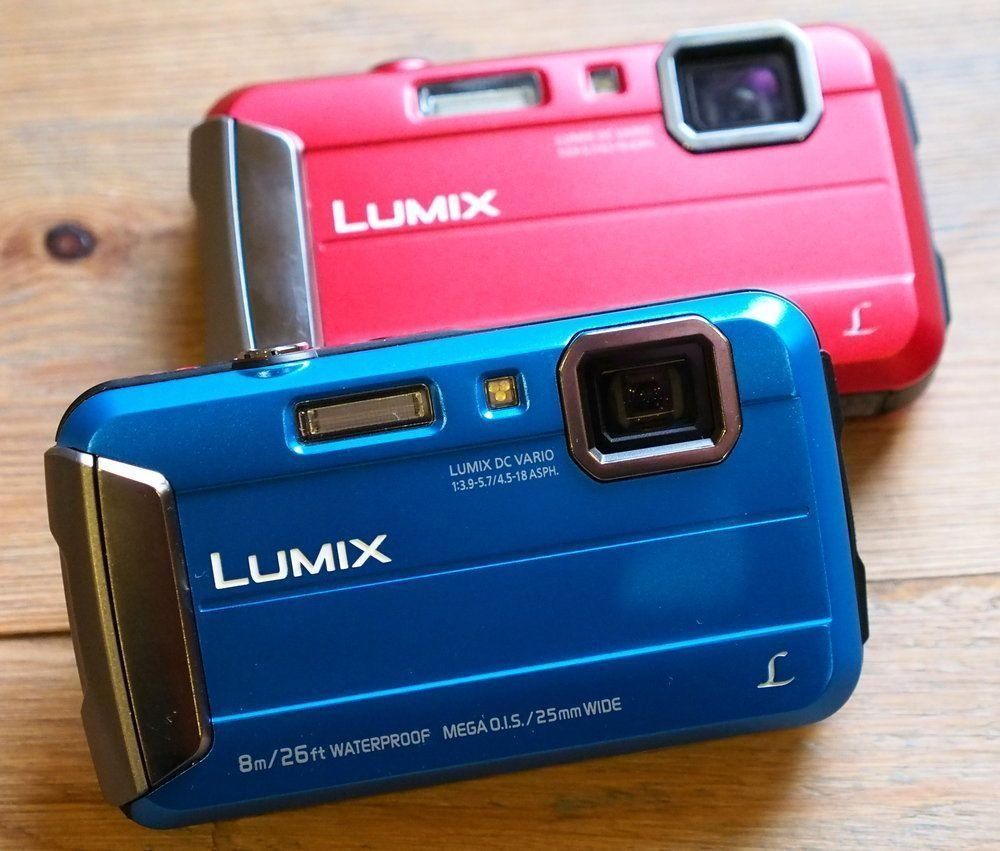
Camera Panasonic Lumix DMC-FT30
votes 0
| Name of indicator | Indicator value |
|---|---|
| Optical lens with a photodiode light-sensitive matrix manufactured using the technology | Charge Coupled Device (CCD), 1/2.33 |
| Number of operating points | 16 Mpel |
| Digital Video Recording Format | Image resolution 1920×1080 pel |
| Matrix light sensitivity range | 125 to 3200 ISO, Auto ISO to ISO 6400 |
| Approximation using optics | 4 times |
| digital zoom | 4 times |
| Machine display | LCD, 2.7 inch display with 0.23 Mpel resolution |
| WiFi network | No module |
| GPS navigation sensor | Not installed |
| NFC | Missing |
| Additional options | Missing |
| dimensions | 104/20/58mm |
| Weight | 144 g (with battery and optional memory card) |
| Price | from 180$ |
The 10th place in this review is occupied by a budget model from Panasonic. Low cost and a set of standard features - that's the distinguishing feature of this device. The device is not without drawbacks. If you look at the display not at a right angle, then the image quality drops noticeably, and it is difficult to assess what colors will be in the picture. This model can be recommended for beginner underwater photographers on a limited budget.
- small cost.
- image quality drops at an angle;
- tight buttons in control;
- slow zoom.
conclusions
Unfortunately, many people support the opinion that high-quality pictures require a sophisticated device. The truth is that great pictures are taken by people who have learned how to properly use the light, choose the composition and thoroughly studied the characteristics of the photographic equipment available. Therefore, in order not to be disappointed with an expensive purchase, you should start shooting with your existing camera and understand what additional options it needs to satisfy all the needs of the photographer.
new entries
Categories
Useful
Popular Articles
-

Top ranking of the best and cheapest scooters up to 50cc in 2022
Views: 131650 -

Rating of the best soundproofing materials for an apartment in 2022
Views: 127689 -

Rating of cheap analogues of expensive medicines for flu and colds for 2022
Views: 124518 -

The best men's sneakers in 2022
Views: 124031 -

The Best Complex Vitamins in 2022
Views: 121938 -

Top ranking of the best smartwatches 2022 - price-quality ratio
Views: 114979 -

The best paint for gray hair - top rating 2022
Views: 113394 -

Ranking of the best wood paints for interior work in 2022
Views: 110318 -

Rating of the best spinning reels in 2022
Views: 105328 -

Ranking of the best sex dolls for men for 2022
Views: 104365 -

Ranking of the best action cameras from China in 2022
Views: 102215 -

The most effective calcium preparations for adults and children in 2022
Views: 102011
